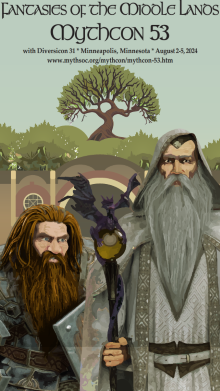Abstract
The landscape, in a piece of mythopoeic fiction, is more than a backdrop to the action- It is the story itself rendered static. The way each author arranges their landscape thus reflects their conception of continuities, discontinuities, and imbalances of power and reality between the mundane and the fantastic. I argue that by applying the postcolonial theories of Mary Louise Pratt, Michel de Certeau, and Homi Bhaba to the fantastic landscapes that are mapped or left unmapped by Diana Wynne Jones in Hexwood and Garth Nix in his Old Kingdom Series, it is revealed that the ideological divide between the mundane and the fantastic has been socially constructed to create a cultural hegemony for one zone at the expense of the reality of the other. The landscape each of these authors employs is therefore a judgment of the relative values of the mundane and the fantastic; while Jones finds that assignment of primary reality to either is ultimately harmful for the entire system, Nix counters that it is necessary to retain the divide if a multiplicity of viewpoints is to exist at all, revealing that the ‘reality’ of both zones is tenuous.


